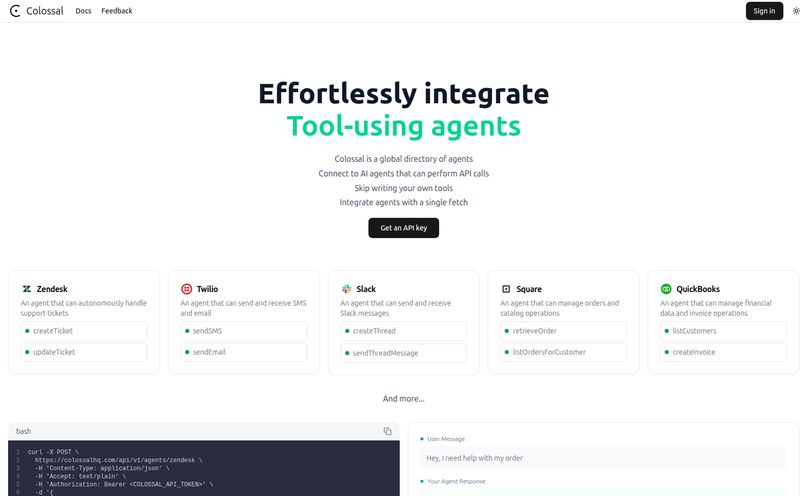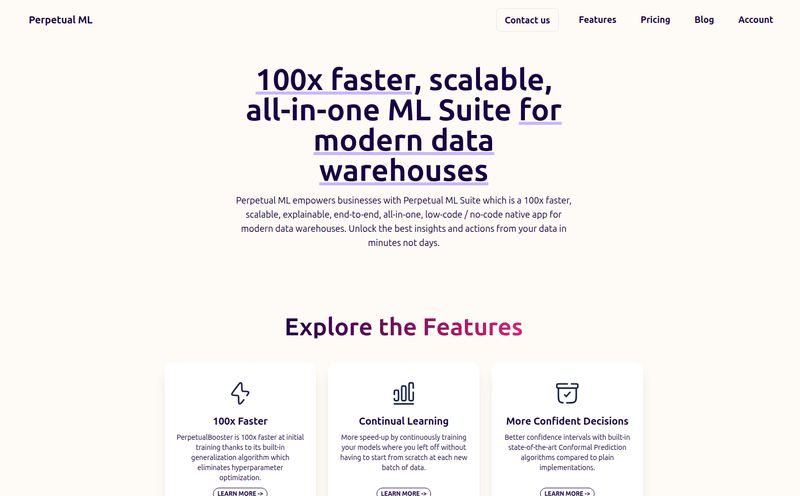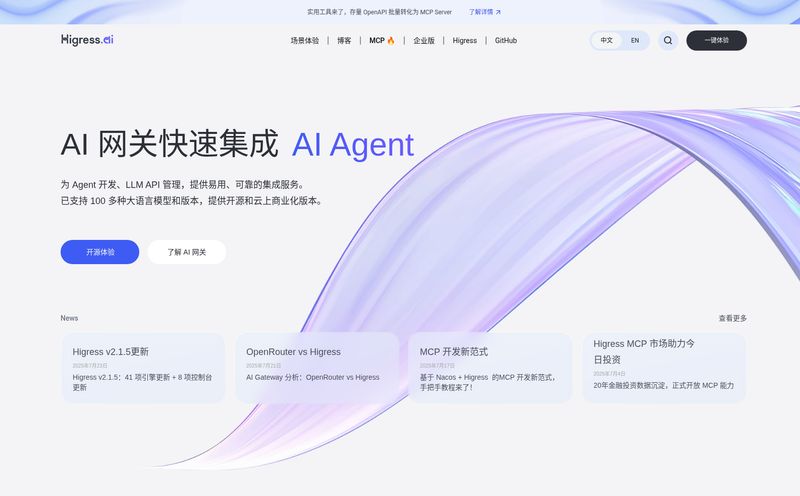You know that feeling when you stumble upon a new, shiny tool in the AI space? The kind that promises to solve all your GenOps headaches and let you finally build that world-changing AI agent you’ve been whiteboarding for weeks. That was me when I first heard about Lamatic.ai. The pitch was slick: a managed Platform-as-a-Service (PaaS) for building and deploying Generative AI apps, especially on the edge. My interest was piqued.
So I did what any self-respecting tech blogger does. I went straight for the pricing page. And I was met with… this:
A big, fat, “500 Something unexpected happened” error.
Ah, the classic. A rite of passage in the startup world. For a moment, I wondered if this was some avant-garde marketing, a meta-commentary on the unpredictable nature of AI development. Probably not. But it made me want to dig in even more. What was this platform? And could I find the treasure map to its pricing?
Spoiler alert: I did. And it was worth the hunt.
So, What Exactly Is Lamatic.ai Anyway?
Let's get the jargon out of the way first. Lamatic.ai is a managed PaaS designed to make building, testing, and deploying GenAI applications easier. Think of it less as a box of raw materials and more like a high-tech Lego set for AI agents.
Instead of wrestling with Kubernetes clusters, manually setting up a vector database, and writing endless boilerplate code to connect to an LLM, Lamatic gives you a visual canvas. You drag, you drop, you connect nodes, and you build out the logic of your AI application in what they call a “flow.” It's aimed at developers and teams who want to move fast and break things—without actually breaking their infrastructure.
The big kicker here is the focus on edge deployment. We'll get into that more later, but it’s about running your AI closer to where your users are, which is a pretty big deal for speed and privacy.
The Features That Actually Matter
A feature list is just a list until you understand why it matters. Lamatic has a few core components that form the heart of the platform.
The Visual Flow Builder: Your AI Whiteboard
This is the centerpiece. If you've ever used tools like Zapier or Make, you'll feel somewhat at home. It’s a low-code environment where you can visually map out your application's logic. You can pull in data from a source, send it to a large language model like GPT-4 for processing, store the result, and then shoot it off to Slack or a webhook.
I’ve always felt that the biggest bottleneck in a lot of projects isn’t the coding itself, but the constant back-and-forth of translating a business idea into functional logic. A visual builder like this helps bridge that gap. It makes the whole process more intuitive and, frankly, more collaborative. Your product manager can actually see the flow instead of just imagining it from a technical doc.
Built-in VectorDB (Thanks, Weaviate!)
If you're building any kind of modern AI app that needs a memory (hello, RAG pipelines), you need a vector database. This is the component that stores your data as numerical representations—or embeddings—allowing the AI to find relevant information lightning-fast.
Normally, this means setting up a separate service like Pinecone, Milvus, or, well, Weaviate. It’s another account to manage, another API to integrate, another bill to pay. Lamatic just builds it right in, powered by the open-source Weaviate vector database. This is a huge plus. It removes a significant piece of the infrastructure puzzle, letting you focus on what your app actually does. One less thing to worry about is always a win in my book.
Pushing AI to the Edge
Okay, “edge deployment.” It sounds cool, but what is it? Instead of running your AI application in a single, centralized data center (like AWS us-east-1), edge computing runs it on a network of smaller servers located geographically closer to your users.
Why does this matter? Speed. If your user is in Tokyo and your server is in Virginia, there's a noticeable delay (latency) as data travels across the ocean and back. An edge network can run the app from a server in Japan, making it feel almost instantaneous. This is critical for real-time applications, like an interactive AI assistant on a website or an AI-powered camera system in a retail store.
The Moment of Truth: Lamatic.ai Pricing
After my initial run-in with the 500 error, I was thrilled to finally see the numbers. And honestly, they're pretty compelling. They've opted for a classic three-tiered model that makes a lot of sense for their target audience.

Visit Lamatic.ai
Here’s the breakdown as I see it:
- Starter ($0/month): This is a genuinely useful free tier. You get 1,000 requests/month, 1 flow, and up to 1,000 records in your VectorDB. This is more than enough to build a proof-of-concept, test out the platform, and make sure it’s the right fit for your project. You can’t complain about free.
- Pro ($100/month): This is the sweet spot for most startups and small to medium-sized businesses. The limits jump significantly to 100,000 requests, 10 flows, 5 team members, and 50,000 VectorDB records. You also get longer log retention (30 days) and better support. For a hundred bucks, offloading all that infrastructure management is a steal.
- Enterprise (Custom): For the big leagues. This is your classic “call us for a quote” plan. It comes with unlimited everything, plus enterprise-grade features like SSO, custom models, compliance support, and a dedicated account manager. If you're operating at a scale where you need this, you already know who you are.
Where It Shines and Where It… Stumbles
No tool is perfect, right? Lamatic gets a lot of things right, but it's important to have a balanced view.
The Good Stuff is pretty obvious. The managed, serverless platform is a dream for developers who'd rather be building features than patching servers. The low-code builder lowers the barrier to entry, and the integrated VectorDB is a massive time-saver. It’s an accelerator. It lets you get from idea to a functioning AI application much, much faster than building everything from scratch. This is a platform built for speed.
The Not-So-Good Stuff is more nuanced. While it's “low-code,” you still need to understand the fundamentals of how GenAI applications work. You need to know what a prompt is, how an LLM functions, and why you need a vector store. It simplifies the how, but you still need to know the what and why. Also, by choosing Lamatic, you're tying yourself to their ecosystem and their choice of Weaviate as the VectorDB. For most, this is a fine tradeoff for the convenience. But if you have a deep love for another vector database, thats something to consider.
Who Is Lamatic.ai Actually For?
So, who should be signing up for that free tier right now?
In my opinion, Lamatic is a perfect fit for a few key groups. First, startups and small dev teams who are racing to build an MVP with an AI co-pilot, a RAG-based search, or some other GenAI feature. The speed and low overhead are exactly what you need.
Second, larger companies with innovation labs or teams tasked with exploring new tech. Lamatic allows them to experiment with edge AI use cases without a massive upfront investment in specialized hardware or MLOps talent.
It's probably not for the data science purist who wants to fine-tune every hyperparameter and build their entire stack from the ground up on bare metal. And that's okay. This is a tool of abstraction, and it excels at that.
Frequently Asked Questions about Lamatic.ai
- What is Lamatic.ai in simple terms?
- It's an all-in-one platform that helps you build, host, and manage AI-powered applications, especially those that need to be very fast. It provides a visual builder and handles all the complicated server stuff for you.
- Does Lamatic.ai have a free plan?
- Yes! There's a 'Starter' plan that's free forever. It's generous enough to build and test a real project before you need to consider paying.
- What is a VectorDB and why is it included?
- A VectorDB is like a special memory for AI. It stores information in a way that allows the AI to quickly find relevant context to answer questions or complete tasks. Lamatic includes one so you don't have to set one up separately, which saves a lot of time and complexity.
- What does "edge deployment" mean for my AI app?
- It means your app runs on servers physically closer to your users around the world. This reduces lag and makes the app feel much faster and more responsive, which is essential for real-time interactions.
- Can I integrate my own custom AI models?
- Yes, the pricing table shows that support for custom models is available on the Enterprise plan, allowing for more specialized and proprietary AI solutions.
- Is Lamatic.ai good for beginners?
- It's a mixed bag. The low-code visual builder makes it much easier than traditional coding. However, you'll get the most out of it if you have a basic understanding of generative AI concepts. It lowers the technical barrier, not the conceptual one.
Final Thoughts on Lamatic.ai
After my little adventure to find the pricing page, I have to say, I'm impressed. Lamatic.ai is a thoughtfully designed platform that addresses some of the most annoying and time-consuming parts of bringing a GenAI application to life. It’s a strong contender in the growing field of AI development platforms.
By bundling the visual builder, the serverless infrastructure, and that all-important VectorDB into one package, they're offering a genuinely compelling shortcut. It feels like we're just scratching the surface of what's possible with tools like these, and I'm genuinely excited to see what people start building.
Reference and Sources
- Lamatic.ai Official Website
- Weaviate Open-Source Vector Database
- What is Edge Computing? - A good primer from Cloudflare on the concept.



